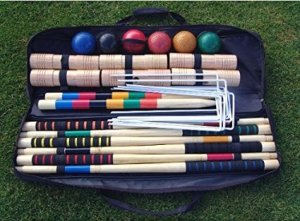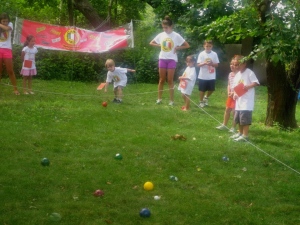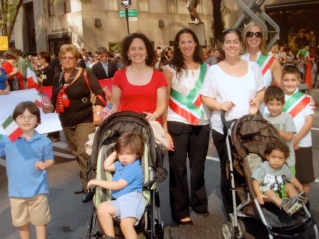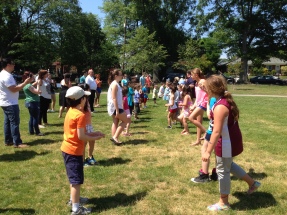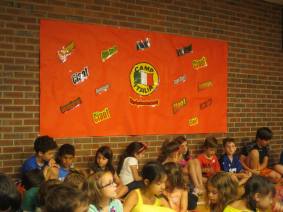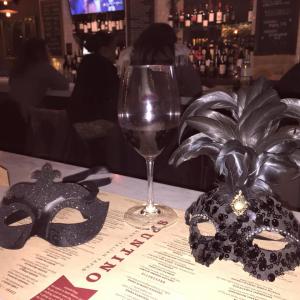I am very excited to be taking part in the A to Z of Raising Global Citizens – a series that began on June 1st and will run through June 26th on a multicultural blog called: Creative World of Varya’s.
My topic is Sports. There are many sports children can try out for fun or watch while learning about the world. I have found that sitting down to watch the World Cup, The Olympics, Rugby, Golf and Tennis have always led to stimulating conversations with our sons about geography, flags, languages, government, even world economy. There are also sports you can seek out in your town, state or country that can be watched or played first-hand and can broaden your children’s horizons and help them become world citizens.
Polo
One of my family’s favorite summer spectator sports is Polo. Don’t get me wrong, although Polo may sound intimidating and more like a sport for the jet-setting type, I am happy to report that there are plenty of public polo grounds and State Parks which welcome the general public and go as far as educating and encouraging hands-on fun for children. There are many aspects about Polo that captivate children’s attention. Let’s start with the most obvious: it involves horses (Polo Ponies) a ball and mallet, and it is played outdoors. How can you go wrong? Polo is also fun, fast and exciting. In the U.S.A., in my experience, most Polo teams typically include at least one international member. This fact usually sparks conversation about other countries and languages. A great historical tidbit you could include when introducing Polo to your children is the fact that Polo is arguably the oldest recorded team sport in known history, with the first matches being played in Persia over 2500 years ago. Polo is a fantastic way to expand your child’s knowledge of the world and discover yet another fun and exciting sport.
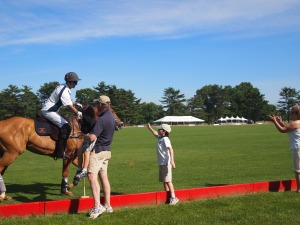
End of the Match High Fives at “Polo in the Park”, Bethpage State Park
If you like to expose your children to unconventional sights and experiences while on holiday, I recommend attending a Polo match during your travels. Polo is an international sport played in at least 80 countries around the world. A list of playing countries can be viewed on the Federation of International Polo website.
My husband and I took our boys to see a polo match in Argentina. Everybody knows that Argentina is famous for soccer (fútbol), but Polo is another very popular sport in Argentina. It has a long history there. The game arrived in the 1800s with British settlers in the Argentine pampas. Argentina has since become internationally renowned in the sport, making it the perfect place to take in a match. It is a family-friendly event and attracts locals as well as European royalty. We purchased tickets at the gate for about $25.00 per person and saw an amazing match with some of the best players in the world. Campo Argentino de Polo in downtown Buenos Aires is the most important Polo Stadium in the world. Their high Polo season is mid October to mid December.
Croquet
Croquet is believed to have been first played by thirteenth century French peasants who used crudely fashioned mallets to whack wooden balls through hoops made of willow branches.The hoops are often called “wickets” in the U.S.A. It is a much more accessible sport for children to try at home or in their home town at a picnic or while on holiday. Our family enjoys croquet when we are on summer holidays as it does not involve running, getting winded or perspiring (in other words, it is a “parent-friendly” sport to play with your children). One of the fun things about croquet is that it pops up throughout the year when we read new books or watch certain movies. Croquet always seems to be in the background of a museum painting, or an illustration in a book or a movie. My boys tend to catch these “croquet cameos” regularly. It is a wonderful way for them to feel like members of the global world we live in. If they play croquet at home and later observe others in different parts of the world playing croquet – albeit in books, art or movies, then, unconsciously they begin to feel like global citizens who share interests with the rest of the world!
Croquet sets can be purchased at most sporting goods stores and on Amazon for a variety of prices.
Bocce
Bocce is also a ball sport played at many American backyard picnics. This sport shares a common ancestry with the ancient games played in the Roman Empire. Bocce was developed into its present form in Italy and it is played around Europe and also overseas – including Australia, North America, and South America and other places that received Italian migration.
The sport is also very popular on the eastern side of the Adriatic, especially in Croatia, Montenegro and Herzegovina, Slovenia and Southern France where the sport has taken on different names.
Bocce is still played regularly in many New York City neighborhood parks by the descendants of the original Italian immigrants. My sons used to stop and watch the senior Bocce players for a good 20 minutes at our local park before making their way to the playground. It was always a treat for them to watch the Italian members of the community play Bocce.
CampItalia, a summer camp in Long Island, NY, conducts an Italian language and culture program that includes Bocce as one of their many outdoor activities. The kids always enjoy this part of their day. They have tons of fun and learn a little more about the world they live in as they become world citizens.
Remember to seek out sports such as these in your communities or while on holiday. It will most likely enrich your day and overall travel experience.
Which sports do your global children enjoy?
Buon divertimento!!

